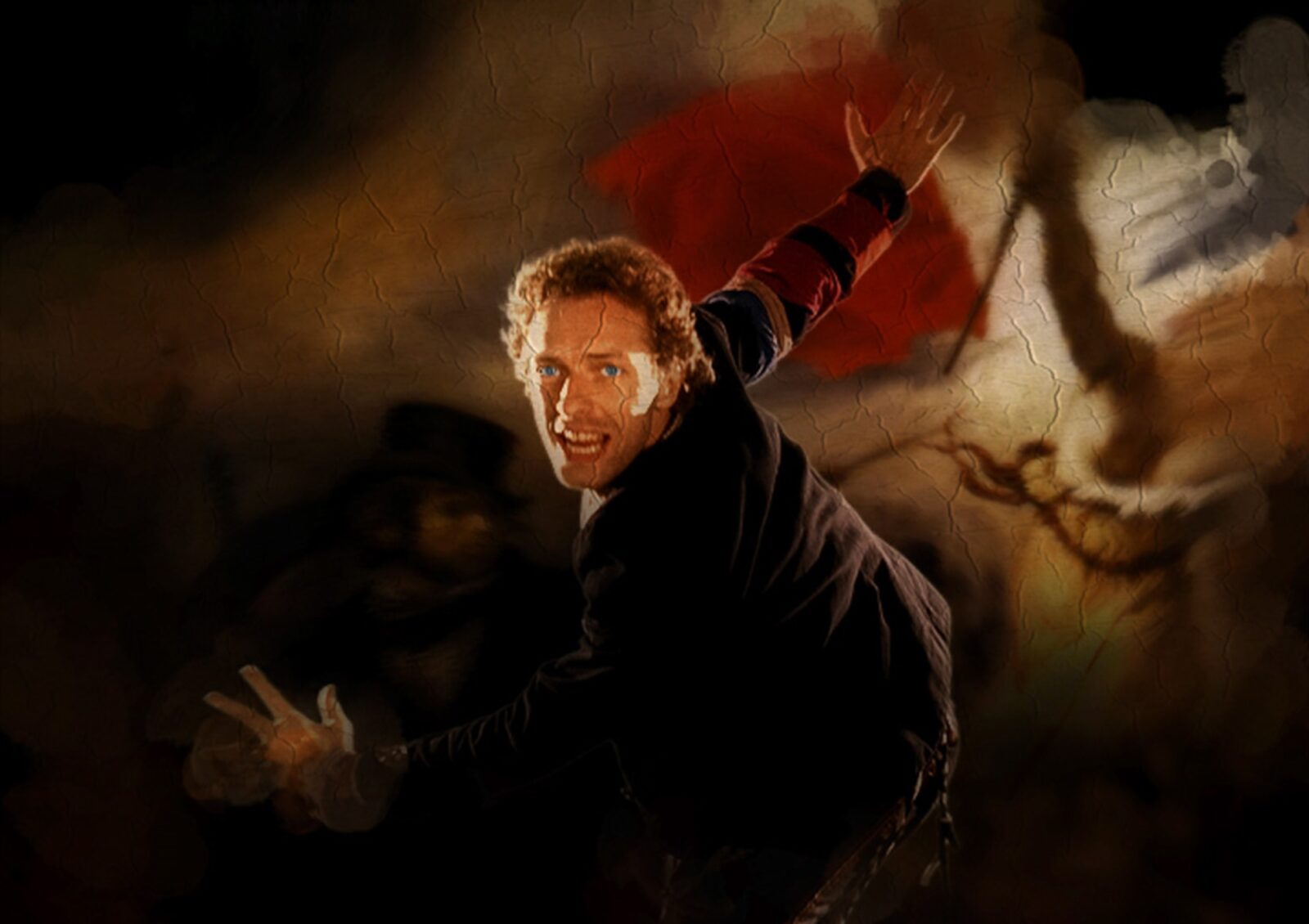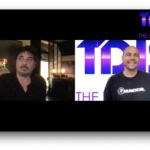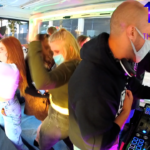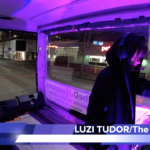Coldplay’s Viva La Vida: The Tragic Fall of a King

Coldplay’s Viva La Vida remains one of the most iconic and influential songs of the 21st century. The song, released in 2008, has captivated audiences with its unique blend of orchestral melodies and vivid storytelling. At its core, Viva La Vida is an exploration of the tragic fall of a king, inspired by the French Revolution and its aftermath. As we delve into the meaning behind the song, we uncover the rich tapestry of historical events and cultural references that have shaped this timeless masterpiece.
Coldplay’s Genre and Style
Coldplay’s style can be described as a fusion of alternative rock, pop rock, and Britpop. Their sound is characterised by grandiose instrumentals, emotive lyrics, and soaring melodies. Over the years, the band has experimented with different genres and styles, but their core sound remains rooted in powerful storytelling and emotional resonance.
The Origins of Coldplay’s Viva La Vida
Coldplay is a British rock band formed in London in 1996, comprising four members: Chris Martin, Jonny Buckland, Guy Berryman, and Will Champion. The band’s unique sound, which combines alternative rock with pop and electronic elements, has helped them rise to global fame. Over the years, Coldplay has released numerous chart-topping songs and albums, including the critically acclaimed A Rush of Blood to the Head and X&Y. However, their fourth studio album, Viva La Vida or Death and All His Friends, truly catapulted them to superstardom.
Viva la Vida or Death and All His Friends Album CoverThe Album
Coldplay’s fourth album, Viva la Vida or Death and All His Friends, was released in 2008 and marked a significant departure from their previous work. The album explores themes of life, death, war, and change, reflecting the turbulent times in which it was created. The album cover features a rendition of the 1830 painting Liberty Leading the People by French artist Eugene Delacroix, which depicts French revolutionaries marching and waving the French flag.
The Story Behind Coldplay’s Viva La Vida Lyrics King Louis XVI and the French Revolution
In order to understand the meaning behind Coldplay’s Viva La Vida lyrics, it is essential to know the historical context of the French Revolution. The Revolution which lasted from 1789 to 1799, was a period of radical social and political upheaval in France. The revolutionaries aimed to overthrow the monarchy and establish a more just and equal society in its place.
King Louis XVI, who ruled France from 1774 to 1791, was a central figure in the events of the Revolution.
Louis inherited the throne during the period France faced severe economic and social issues, including widespread poverty, famine, and debt. Despite his initial attempts at reform, his indecisiveness and inability to effectively address these issues ultimately led to his downfall.
The Overthrow and Execution of King Louis XVI
As the Revolution progressed, the revolutionaries grew increasingly disillusioned with the monarchy, ultimately leading to the king’s overthrow and imprisonment. Louis XVI was put on trial, found guilty of high treason, and sentenced to death by guillotine. On January 21, 1793, he was executed in front of a cheering crowd at the Place de la Concorde in Paris.
It is this tragic tale of a fallen king that serves as the foundation for Coldplay’s Viva La Vida. The song’s lyrics are told from the perspective of King Louis XVI, reflecting on his past power and the events that led to his demise. Through this haunting narrative, the song captures the complex emotions and turmoil of the king and the revolutionaries.
The Meaning of Viva La Vida
The title, Viva La Vida, is a Spanish phrase translated as long live life, live the life, or simply live life. The phrase is taken from a painting by Frida Kahlo, a famous Mexican artist who suffered from chronic pain and physical disabilities. Kahlo painted the words Viva la Vida on a watermelon shortly before she died in 1954, expressing her love for life despite her hardships.
Coldplay’s lead singer, Chris Martin, said that Kahlo’s painting and her courage to face life with boldness inspired him. He said: “She went through a lot of pain, of course, and then she started a big painting in her house that said, Viva la Vida. I just loved the boldness of it.“
However, the title does not appear in the lyrics of the song, which are about a different topic: the downfall of a king.
Coldplay – Viva La Vida (Official Video)Lyrics and Meaning
The lyrics of Viva La Vida are narrated from the perspective of a fallen king, reflecting on his past glory and the tragic consequences of his actions. Throughout the song, the protagonist grapples with the weight of power, the fickle nature of public opinion, and the ultimate futility of his efforts to control the forces of history.
Regret and Reflection
The opening lines of Viva La Vida introduce the fallen king as he reflects on his past:
I used to rule the world
Seas would rise when I gave the word
Now in the morning, I sleep alone
Sweep the streets I used to own
These lines evoke a sense of nostalgia and regret as the king recalls the extent of his power and the emptiness of his current existence. The sweeping streets he once ruled are now a stark reminder of his fall from grace.
The Rise and Fall
The second verse of Viva La Vida traces the arc of the king’s rise and eventual downfall:
I used to roll the dice
Feel the fear in my enemies’ eyes
Listen as the crowd would sing
“Now the old king is dead, long live the king”
One minute, I held the key
Next, the walls were closed on me
And I discovered that my castles stand
Upon pillars of salt and pillars of sand
These lyrics capture a moment Louis XVI held the key to his kingdom but soon found the walls closing on him. The people’s hope for change upon his ascension to the throne is reflected in the phrase, Now the old king is dead, long live the king.
The chorus then repeats:
I hear Jerusalem bells a-ringin’
Roman cavalry choirs are singin’
Be my mirror, my sword and shield
My missionaries in a foreign field
For some reason I can’t explain
I know Saint Peter won’t call my name
Never an honest word
But that was when I ruled the world
These lines contain historical and Christian references that suggest his delusions of grandeur and his sense of betrayal. Jerusalem bells are associated with religious ceremonies and holy wars; Roman cavalry choirs are related to ancient empires and military conquests; mirrors, swords, and shields are symbols of royalty and protection; missionaries are representatives of faith and expansion; and honest words are signs of loyalty and trust. The king implies that he was once a great leader with divine support and loyal followers, but he cannot understand why he was overthrown and lied to.
It was the wicked and wild wind
Blew down the doors to let me in
Shattered windows and the sound of drums
People couldn’t believe what I’d become
And revolutionaries wait
For my head on a silver plate
Just a puppet on a lonely string (Mmm, mmm)
Aw, who would ever wanna be king?
The sound of drums in the Coldplay lyrics symbolises the revolutionaries’ march, while the shattered windows signify the chaos and destruction brought about it. However, he admits that he changed for the worse, becoming corrupt. He also reveals his fear and regret as he awaits execution.
The line, a puppet on a lonely string, captures the image of King Louis XVI as a powerless figure, manipulated by forces beyond his control, and the question, Who would ever want to be king? reflects his regret and disillusionment with his position.
The song ends with a repetition of the chorus followed by an instrumental outro that fades out gradually, capturing the tragic fall of a king who ruled the world but lost it all.
The Song’s Dichotomy
The song Viva La Vida presents a dichotomy between the revolutionaries, portrayed as heroes in Delacroix’s painting, and King Louis XVI, characterised as a tragic figure. This contrast reinforces the album’s theme of change and allows the listener to consider both perspectives for a more comprehensive understanding of the revolution.
The Musical Style and Influences
Viva La Vida is a song that combines elements of baroque pop, orchestral pop, and art rock. It features a prominent string section that loops throughout the song, creating a dramatic and majestic atmosphere. It also uses a digitally processed piano that adds texture and depth to the sound. Other layers of instruments and vocals are gradually added as the song builds up to a climax.
The song was produced by Markus Dravs, Brian Eno, Jon Hopkins, and Rik Simpson, who helped Coldplay experiment with different sounds and styles. The band also cited various musical influences for the song, such as Arcade Fire, U2, Joe Satriani, Beethoven, Kraftwerk, Blur, Echo & The Bunnymen, The Beatles, Nirvana, Pink Floyd, Oasis, and Radiohead.
Coldplay released two music videos for this song. Hype Williams made the official video, which premiered in August 2008, depicting the band against a backdrop of Eugène Delacroix’s painting, Liberty Leading the People. The alternate music video dropped alongside the first one but was directed by Anton Corbijn and starred Chris Martin as a king.
Conclusion
Coldplay’s Viva La Vida is a powerful and poignant song that captures the tragic fall of a king and the tumult of a revolution. By analysing the lyrics and understanding their historical context, we can appreciate the depth and complexity of this modern classic. As one of Coldplay’s most famous songs, Viva La Vida continues to inspire and captivate listeners with its compelling story and timeless message.



















Comments
This post currently has no comments.